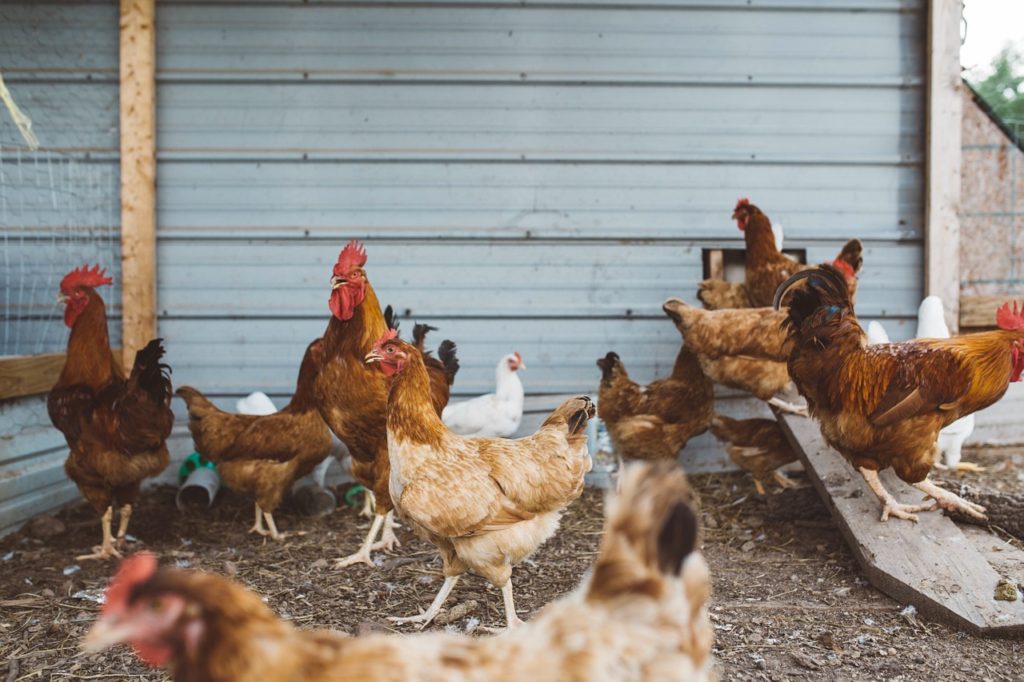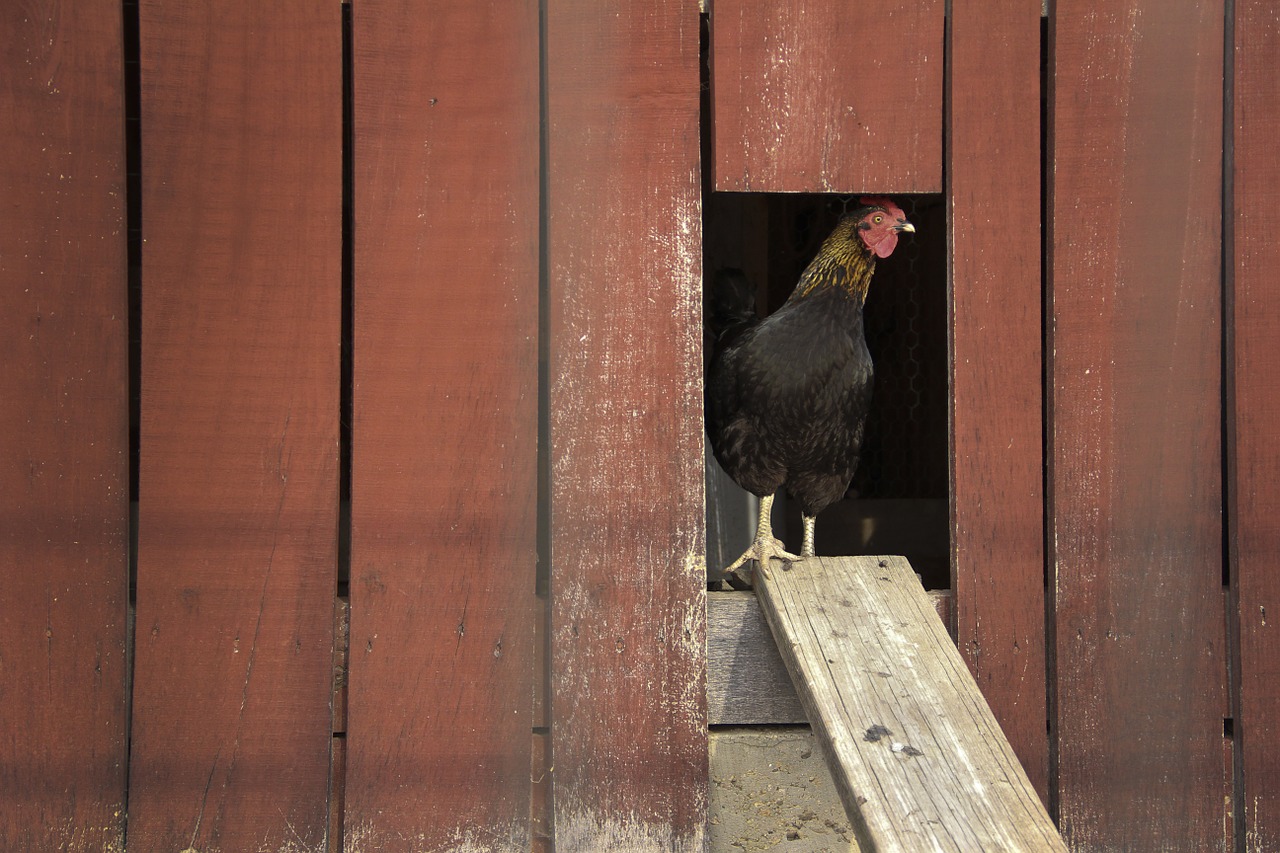Knowing how to build your own chicken coop isn’t quite as difficult as many chicken farmers and hobbyists believe. If you plan to rear chickens in your backyard, you might want to build your own chicken coop via DIY means. In this piece, we will walk you through the steps on how to create a large chicken coop in a few easy steps.
Consider the Number of Chickens You Plan to Raise
For every bird you keep, you will need to provide a space of at least 4 square feet as to prevent the coop, or chicken tractor, from becoming overcrowded. This is why it is imperative to know the number of chickens you plan to rear. Once you have established how many chickens you plan to raise, it is important to make the perfect dimension for your chicken coop. The general rule of thumb is to make the coop bigger than the standard space need for each bird. If you can afford the space and have the money, then it is best for you to build an extra large chicken coop that could use everything from reclaimed wood to housing roosting poles. Above all, you want a chicken shelter design that is easy to build and makes raising chickens a breeze.
Plan How You Want Your Chicken Coop to Be
The importance of planning cannot be overemphasized. It is a necessary component of constructing a large chicken coop. What you should have at the back of your mind is that you are erecting a home and a shelter for your birds and the main aim is to ensure that your chickens stay secure and comfortable. It is vital to have an in-depth knowledge of the different available coop designs for chickens and the purposes they serve before the poultry house is even close to being built. For example, the best chicken coop for 2–3 chickens is an A-frame.

The Most Important Things to Have in Mind When Planning to Build Your Own Chicken Coop
- Pick out the right materials
The recommended material for covering the outer area of your chicken coop is the chicken wire mesh. The best locks are those that are not very easily opened— you need those because they will protect the poultry against predators.
- Elevate your Chicken Coop
It is important to elevate your chicken coop at least two or three feet from ground level. When you do this, the chickens’ feet stay dry, especially during heavy rain and it also allows for easy mobility. It also increases security from predators.
- Fix in a Perch area
Chickens need to get some shut-eye, too! This is why they need a good perch area. To make chickens feel more comfortable while roosting, the important thing is to give them enough space and make sure it doesn’t become cramped.
- Nesting Box
A hen house should have a good nesting area for the chickens to lay their eggs in safety. Therefore, it is a good idea to make the nesting box large enough accommodate all the chickens while they lay eggs. The chicken nesting box should be at least four inches in depth, and you can fill the nesting box with straw for insulation. On an average, you should be able to place three hens inside one nesting box.
- Ideal Ventilation
Chickens deserve fresh air, too, so it is vital to give your birds enough room for aeration to prevent them from falling sick due to poor ventilation. No one wants to walk into a chicken coop that is smelly—and neither do the chickens! Therefore, you can improve ventilation in your coop by fixing windows or adding vents.
- Proper Insulation
A chicken coop that is properly insulated will prolong the chicken’s life. Therefore, always ensure that you pinpoint the type of weather conditions that your chicken’s coop is exposed to. Once you are sure of this, make use of good insulating material to aid conduction. The most frequently used insulation material is straw. Straw is very soft, absorbent, and very affordable. In summer, reduce the insulation cover of your coop. Should the need for a heat lamp arise, ensure you use safe options that won’t raze the place to the ground.
- Accessibility
How chicken-friendly is your coop? Hopefully, very friendly! Well, it should also be human-friendly to enable you to gain access when you are trying to collect eggs. Dropping trays and access doors are very important for this purpose.
Gather All Equipment and Materials
When you are done planning, collect all equipment and tools, then you are good to start constructing your coop. It is very important to get accurate measurements so that it will assist you to make well-informed choices when you need to build your chicken coop.
Build
Once you have everything set, the next step is to build the coop itself. The first step is to start with the rectangular-shaped frame and include more of the different components that are needed. Make use of waterproof wood like redwood or cedar wood, instead of timber that has undergone various forms of treatment with chemicals like arsenic that might have an adverse effect on the life of your poultry.
- Build the frame
This step involves mapping out the exact measurement you want then connecting the different parts together. These different parts include the vertical and horizontal posts, the gates, and floor planks.
- Decorate the interior
Spread a full layer of straw to absorb moisture and droppings from the chicken. You can hang a watering device on the side, some next boxes, a roosting bar, and an incandescent bulb.
- Add a finishing touch to the exterior
Add the roofing and walls to fence in the roosting and nesting area. The best materials to use for this are weatherproof materials—one of the cheapest yet most beautiful options, is tin. When constructing the walls, create extra room for a collection of eggs and cleaning of the chicken coop. You should protect all entry points into the coop using latches that cannot be flicked open by raccoons. The chicken door should allow enough air for breathability while the top of the coop should have a vent where hot air can make way out. Cover these ventilation points with chicken wire mesh to prevent critters from sneaking in.
If you love a beautifully decorated coop for your lovely feathered friends, you can decide to customize their coops to suit your tastes and preferences. You can even add in some brightly colored artwork here or add a little ornate trim. Alternatively, how about piping in a little bit of soft music to help promote the laying of eggs? The choice is yours. The important thing is to have fun while doing it.

